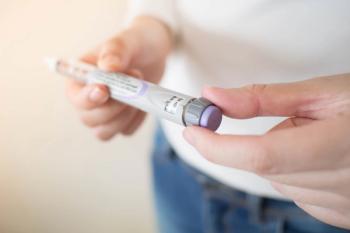
Pharmacies are selling more oral care products
The products pharmacists discuss most often with patients are oral pain-relief products, lip balms, and cold-sore preparations, according to an exclusive Drug Topics survey of pharmacists.
Key Points
Pharmacists influence patients' choices of OTC oral care products, but they usually wait for those customers to ask for advice. The products pharmacists most often discuss with patients are oral pain-relief products, lip balms, and cold-sore preparations. These were a few of the findings of an exclusive Drug Topics survey of pharmacists that extended across various settings; the strongest response came from chain and independent retail pharmacies.
About half (51 percent) of respondents to Drug Topics' August 2009 Over-the-Counter Oral Care Survey said their pharmacies sell more oral care products today than they did a year ago, with about one-third (32 percent) noting that compared to 2007 sales figures, the percentage of their store's OTC sales generated by oral care products had increased in 2008. (Among the others, 62 percent said the oral care portion remained the same; 6 percent said it decreased.)
The survey results are based on 496 replies to online questionnaires e-mailed to retail pharmacists who subscribe to Drug Topics. About 30 percent of respondents live in the Midwest, 22 percent each in the Southeast and Northeast, 19 percent in the Southwest, and 5 percent in the Northwest.
Discussion of oral care with patients appears to be a regular occurrence for pharmacists, with nearly a third (31 percent) counseling 11 to 30 patients per week. The average number of consultations among all respondents is six to 10 per week. Slightly more than half (55.5 percent) of respondents spend two to three minutes providing oral care advice and suggestions to each patient. Very few (4 percent) invest more than five minutes.
Nearly all respondents (90 percent) report patients typically initiate the discussions. When pharmacists do raise the subject, their purpose is to improve a patient's health (82 percent), save the patient money (64 percent), discuss safety or concomitant drug use (58 percent each), and suggest OTC use may suffice when insurance does not cover a prescription (52 percent).
When pharmacists offer product recommendations, 18 percent are for patients under age 18, 36 percent are for patients between 19 and 50, and 45 percent are for patients older than age 50. The sex of those patients is divided along these lines: 44 percent of recommendations were given to men and 56 percent to women.
Three survey questions pertained to product knowledge and where the information comes from that is used for product choice. Pharmacists were asked, "Which source has the greatest influence on your decision to recommend a specific OTC oral care product?"
Medical/pharmacist trade journals scored highest (34 percent), followed by personal experience or experience of a friend/relative/longtime patient (27 percent) and the product's information insert or packaging description (13 percent). Other sources given, in declining order, were patient feedback, dentists, a general health Web site, other pharmacists, a product's sales representative, manufacturer's Web site, and physicians.
In addition to the most frequently discussed oral pain-relief products (80 percent of respondents) and lip balm/cold sore preparations (75 percent), pharmacists also consult with patients on saliva substitutes (37 percent), mouthwash (28 percent), dental/denture adhesives (19 percent), pediatric-specific oral products (17 percent), toothpaste (16 percent), and periodontal care and tooth bleaches/whiteners (15 percent each).
Newsletter
Pharmacy practice is always changing. Stay ahead of the curve with the Drug Topics newsletter and get the latest drug information, industry trends, and patient care tips.























































































































